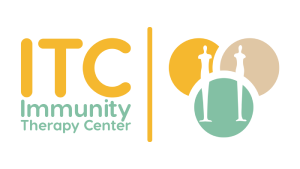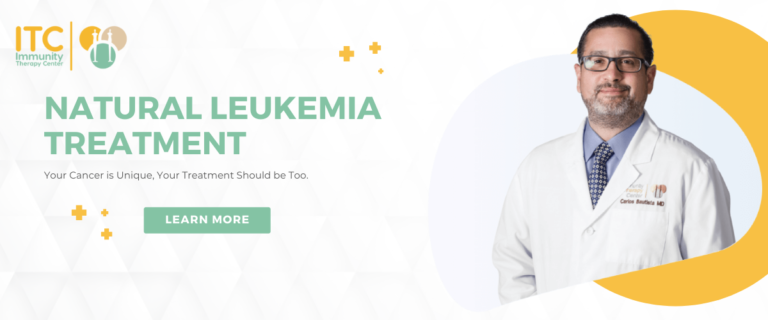Facing end-stage leukemia can be an overwhelming and challenging experience, both for individuals diagnosed with the disease and their loved ones. This article will provide a comprehensive guide to the symptoms of end-stage leukemia.
By understanding what to expect during this difficult period, you can navigate the final stages with greater knowledge and find support in coping with the physical, psychological, and emotional changes that may arise.
Understanding Leukemia: Types and Stages
A basic understanding of leukemia and its progression is key before getting into its end-stage symptoms. A blood cancer type that can affect both children and adults, leukemia comes in different forms. These include acute myeloid leukemia (AML), chronic myeloid leukemia (CML), and acute lymphocytic leukemia (ALL).
Leukemia progresses through various stages, from early diagnosis to the more advanced and challenging end stages. These stages are classified based on abnormal red blood cells’ behavior, maturity, and ability to fight infection. End-stage leukemia is the final stage before death, where the disease has advanced significantly and poses significant physical and emotional challenges.
Terminal Leukemia: Definition and Progression
Terminal leukemia is a term used to describe the advanced stages of the disease when treatment options become limited, and the focus shifts toward providing palliative care and managing symptoms. Cancer cells have increased extensively, affecting bone marrow function and interfering with the body’s ability to produce healthy blood cells.
Common Symptoms of Terminal Leukemia
During the latter stages of leukemia, symptoms categorized as physical, psychological, and emotional are often experienced, with the severity and how quickly each manifests often varying. So, how can you test for leukemia at home? Other than at-home blood test kits, here are the common symptoms to be aware of:
Physical Symptoms of Terminal Leukemia
Leukemia is a cancer type that affects the blood and bone marrow and often presents various symptoms. According to UCHealth, common terminal leukemia symptoms include fatigue, easy bruising or bleeding, frequent infections, and bone and joint pain.
In the later stages of leukemia, individuals may experience overwhelming tiredness and a lack of energy that persists even with rest. Muscle weakness can make routine tasks challenging, while a decrease in red blood cells leads to anemia, characterized by weakness, shortness of breath, and pale skin.
Leukemia also leads to a weaker immune system, which can make one more susceptible to recurrent infections that ultimately become harder to treat. Unintentional weight loss is another common symptom in the advanced stages of leukemia due to loss of appetite and decreased physical function.
Although less common, individuals with leukemia may also encounter chest pain and difficulty breathing due to complications from infiltrating leukemia cells in the chest’s thymus or lymph node. According to the Leukemia and Lymphoma Society, along with being felt in the long bones of the arms and legs, the bone pain caused by leukemia can also be felt in the ribs and in the breastbone.
Moreover, leukemia interferes with producing healthy red blood cells responsible for oxygen transportation, leading to breathlessness, particularly during physical exertion. Seeking immediate medical attention is crucial if chest pain or difficulty breathing occurs to determine the underlying cause and receive appropriate care.
Psychological Symptoms of Terminal Leukemia
- Confusion: Leukemia can affect cognitive function, leading to confusion, disorientation, and difficulty concentrating or remembering things.
- Anxiety and depression: The emotional toll of facing end stage leukemia can manifest as anxiety, sadness, and depression. It is vital to have support and counseling in place at this time.
- Changes in sleep patterns: Disturbed sleep, insomnia, or excessive sleeping can occur in end stage leukemia, further exacerbating feelings of fatigue and emotional distress.
Emotional Symptoms of Terminal Leukemia
- Fear and uncertainty: End stage leukemia often brings heightened fears and uncertainties about the future, both for the individual facing the disease and their loved ones.
- Grief and sadness: Coming to terms with the reality of the disease’s progression can trigger feelings of grief and deep sadness. This makes it vital to have a strong support network.
End Stages of Leukemia: What to Expect
As leukemia enters its end stages, individuals may experience notable physical changes and face emotional and psychological challenges. Understanding what to expect can help in preparing for these changes and seeking appropriate support.
Physical Changes in End Stages of Leukemia
- Increased pain: Individuals may experience intensified pain as the disease progresses, which can be managed with palliative care and medication.
- Swelling and bruising: Leukemia affects the body’s ability to produce healthy blood cells, leading to easy bruising, prolonged bleeding, and swelling.
- Difficulty breathing: Leukemia may also cause fluid to buildup in the lungs, which often leads to experiencing shortness of breath or having difficulty breathing.
Emotional and Psychological Changes in End Stages of Leukemia
- Heightened emotional sensitivity: Emotional reactions may become more intense during the end stages of chronic leukemia. Plenty of emotional support and counseling is vital in navigating these challenges.
- Changes in cognitive function: Cognitive abilities may further decline, resulting in confusion, memory loss, and difficulties with communication.
Palliative Care and Support for End-Stage Leukemia
Palliative care is vital in successfully managing symptoms, providing comfort, and supporting emotional well-being during the end stages of leukemia. It is aimed at enhancing the quality of life over treating the illness directly. It ensures that all physical, emotional, and spiritual needs are met to help ease the burden of dealing with the primary illness.
According to Duke Health, palliative care has proven helpful in improving quality of life. It has reduced the psychological stress of patients who had to undergo treatments like bone marrow transplants, stem cell transplants, and transfusions to address bone cancers.
Holistic Treatments for Terminal Leukemia
At Immunity Therapy Center, we understand that individuals facing terminal leukemia may seek alternative treatment options to complement their conventional medical care. Combining integrative therapies, personalized treatment plans, and supportive care, we address each patient’s unique needs. While discussing alternative treatments with a healthcare professional is always best, the following options available at Immunity Therapy Center are worth considering:
- Immunotherapy: Our center specializes in immunotherapy, which harnesses the power of the immune system to target cancerous cells. This treatment modality aims to enhance the body’s natural defenses and stimulate an immune response against leukemia and other types of cancer like breast cancer and brain cancer.
- Nutritional and lifestyle counseling: We recognize the importance of nutrition and lifestyle factors in supporting overall health and well-being. Our team provides personalized nutritional guidance to optimize the body’s immune function and support the body’s ability to fight cancerous cells.
- Mind-body therapies: We offer mindfulness therapies such as meditation, yoga, and stress reduction techniques. These practices can help individuals manage leukemia’s emotional and psychological impact and promote a sense of well-being.
- Natural supplements and herbal therapies: As part of our holistic approach, we also offer natural supplements and herbal therapies that have shown promise in supporting the immune system and reducing the side effects of conventional treatments.
You can consult our experienced medical professionals, who will determine which alternative treatments suit you based on your specific condition and medical history. We aim to provide comprehensive care, support your overall well-being, and empower you in your fight against terminal leukemia.
Coping Strategies for Patients and Families
Navigating the end stages of leukemia can be emotionally and physically draining for both patients and their families. Here are some coping strategies that can help during this challenging time:
Physical Comfort and Pain Management in Terminal Leukemia
- Seek pain management: Collaborate with healthcare professionals to develop a pain management plan that addresses individual needs and preferences.
- Maintain comfort: Ensure a comfortable environment, with soft bedding, gentle lighting, and temperature control.
Emotional Support and Counseling for Terminal Leukemia
- Seek professional counseling: Engage in individual or family counseling to navigate the complex emotions associated with the end stages of leukemia.
- Build a support network: Surround yourself with loved ones and support groups who can provide empathy, understanding, and companionship.
Hospice and End-of-Life Care for Terminal Leukemia
Whenever medical treatment is ineffective, hospice care is available for compassionate end-of-life support. Hospice teams focus on pain management, emotional support, and ensuring dignity and comfort for patients and their loved ones.
According to the Hospice Foundation of America, while hospice care does not and is not meant to prolong life, studies have shown that patients with certain illnesses live somewhat longer with hospice care than those with the same disease who forgo it.
Resources and Support Organizations
During the end stages of leukemia, it is essential to access resources and support organizations that can provide additional assistance and guidance. Some helpful organizations include:
- Leukemia & Lymphoma Society (LLS)
- American Cancer Society (ACS)
- Hospice Foundation of America (HFA)
Facing the symptoms and challenges of end-stage leukemia is undoubtedly difficult. However, by understanding what to expect, eating foods that fight leukemia, and seeking appropriate support, individuals and their families can find comfort, compassion, and emotional strength during this challenging time. Remember, you are not alone; support is available to help you navigate the journey with dignity, care, and understanding. Contact the Immunity Therapy Center to learn more today.
Written By: Dr. David Alvarez
Dr. David Alvarez is a Board Certified Medical Doctor from Universidad Xochicalco and Certified by the American Heart Association (Advanced Cardiovascular Life Support).
Dr. Alvarez has been collaborating with Dr. Bautista as an Assistant Medical Director at the Immunity Therapy Center for over 6 years. He provides daily on site patient care and participates on the medical board on research and development of patient treatment plans and programs. Dr. Alvarez is a knowledgeable and compassionate Doctor committed to helping patients get to where they want to be health wise through a more holistic and comprehensive approach.
Sources:
- “What is Chronic Myeloid Leukemia?” cancer.org, July 19, 2018, https://www.cancer.org/cancer/chronic-myeloid-leukemia/about/what-is-cml.html. Accessed May 29, 2020.
- “What Can Be Expected as Leukemia Progresses?” virtualhospice.ca, (no publish date), https://www.virtualhospice.ca/en_US/Main+Site+Navigation/Home/Support/Support/Asked+and+Answered/What+to+Expect+with+Various+Illnesses/Cancer/What+can+be+expected+as+leukemia+progresses_.aspx. Accessed May 29, 2020.
- “What to Expect as a Person With Cancer is Nearing Death.” cancer.org, May 10, 2019, https://www.cancer.org/treatment/end-of-life-care/nearing-the-end-of-life/death.html. Accessed May 29, 2020.
- “Leukemia.” health.harvard.edu, December 2014, https://www.health.harvard.edu/cancer/leukemia. Accessed May 29, 2020.
At Immunity Therapy Center, our goal is to provide objective, updated, and research-based information on all health-related topics. This article is based on scientific research and/or other scientific articles. All information has been fact-checked and reviewed by Dr. Carlos Bautista, a Board Certified Medical Doctor at Immunity Therapy Center. All information published on the site must undergo an extensive review process to ensure accuracy. This article contains trusted sources with all references hyperlinked for the reader's visibility.

